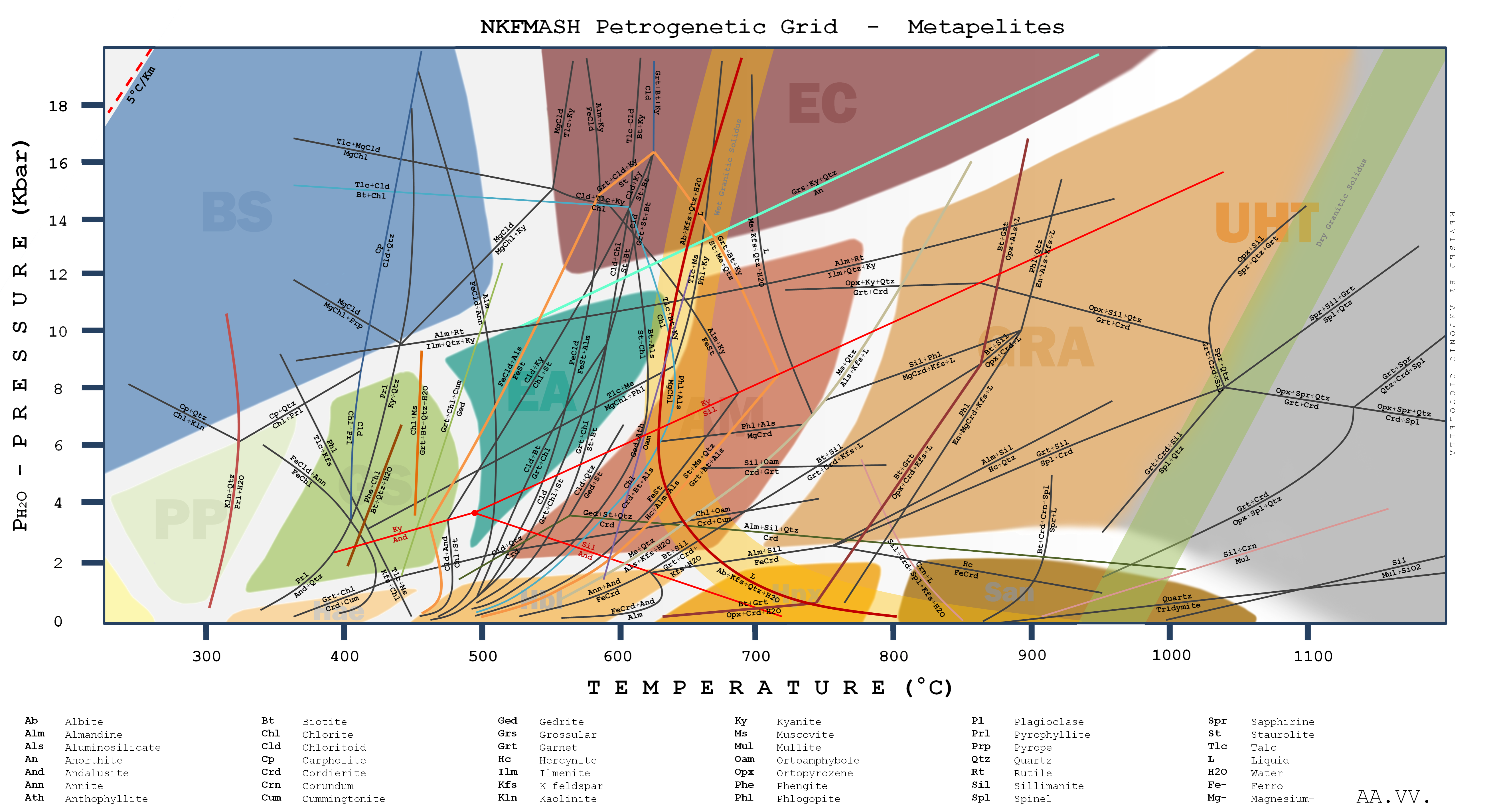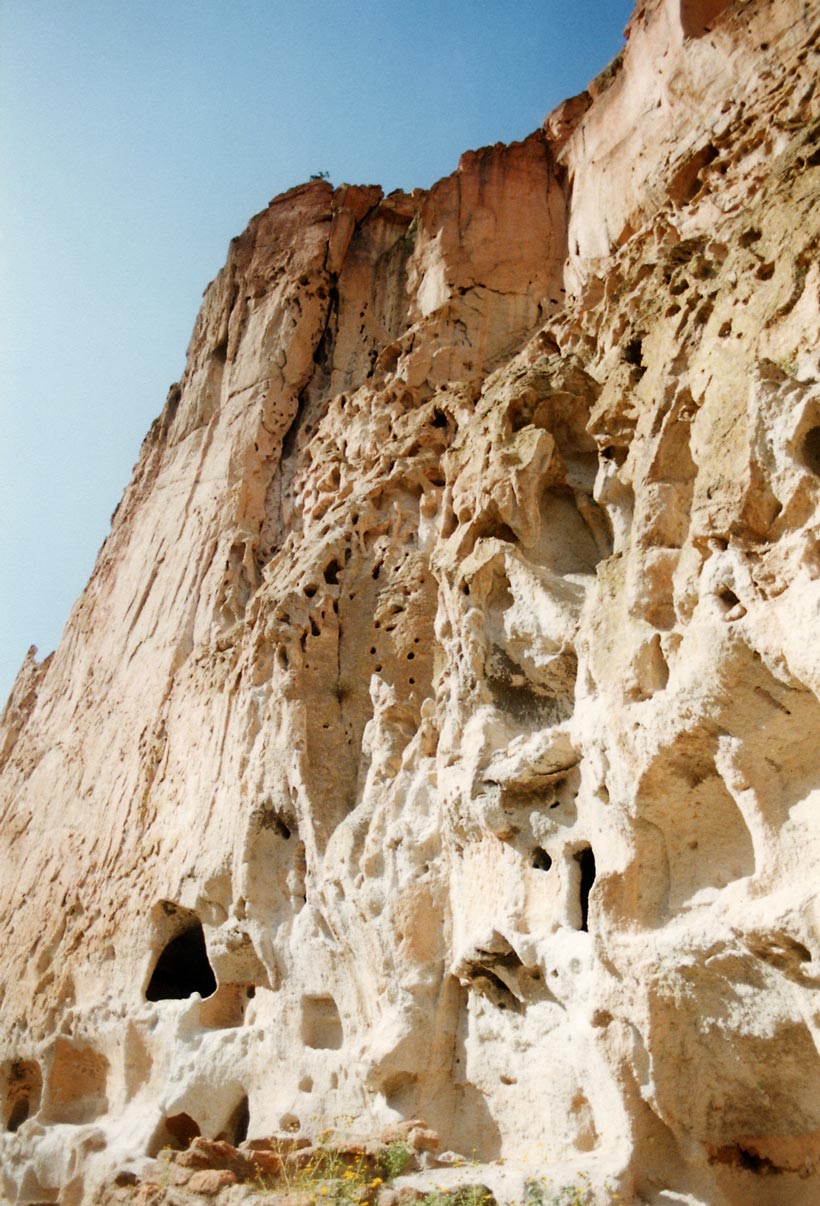|
Mid-German Crystalline High
The Mid-German Crystalline High (or Mid-German High) is a structural high in the Paleozoic geology of Germany. The high forms a northeast-southwest oriented zone through Germany, but actual rock outcrops are sparse since Paleozoic basement rocks are in most of central Germany overlain by younger sedimentary rocks. The Mid-German Crystalline High crops out in the Odenwald, the Spessart, the northern Vosges and some small other massifs. Structure The Mid-German Crystalline High forms the northern part of the Saxothuringian Zone of the Hercynian orogeny. To the northwest it is bounded by the Northern Phyllite Zone (slightly metamorphosed sediments of mid-Paleozoic age), part of the Rhenohercynian Zone. Southeast of the Mid-German High lies a zone where early to mid-Paleozoic sediments of the Saxothuringian Basin crop out, metamorphosed during the Hercynian orogeny. Supposedly, during the mid-Paleozoic (Devonian and early Carboniferous) the Mid-German Crystalline High formed an ar ... [...More Info...] [...Related Items...] OR: [Wikipedia] [Google] [Baidu] |
Archipelago
An archipelago ( ), sometimes called an island group or island chain, is a chain, cluster, or collection of islands. An archipelago may be in an ocean, a sea, or a smaller body of water. Example archipelagos include the Aegean Islands (the origin of the term), the Canadian Arctic Archipelago, the Stockholm Archipelago, the Malay Archipelago (which includes the Indonesian and Philippine Archipelagos), the Lucayan (Bahamian) Archipelago, the Japanese archipelago, and the Hawaiian Archipelago. Etymology The word ''archipelago'' is derived from the Italian ''arcipelago'', used as a proper name for the Aegean Sea, itself perhaps a deformation of the Greek Αιγαίον Πέλαγος. Later, usage shifted to refer to the Aegean Islands (since the sea has a large number of islands). The erudite paretymology, deriving the word from Ancient Greek ἄρχι-(''arkhi-'', "chief") and πέλαγος (''pélagos'', "sea"), proposed by Buondelmonti, can still be found. Geograph ... [...More Info...] [...Related Items...] OR: [Wikipedia] [Google] [Baidu] |
Amphibolite Facies
Amphibolite () is a metamorphic rock that contains amphibole, especially hornblende and actinolite, as well as plagioclase feldspar, but with little or no quartz. It is typically dark-colored and dense, with a weakly foliated or schistose (flaky) structure. The small flakes of black and white in the rock often give it a salt-and-pepper appearance. Amphibolite frequently forms by metamorphism of mafic igneous rocks, such as basalt. However, because metamorphism creates minerals entirely based upon the chemistry of the protolith, certain 'dirty marls' and volcanic sediments may also metamorphose to an amphibolite assemblage. Deposits containing dolomite and siderite also readily yield amphibolite (tremolite-schist, grunerite-schist, and others) especially where there has been a certain amount of contact metamorphism by adjacent granitic masses. Metamorphosed basalt (metabasalt) creates ''ortho-amphibolite'' and other chemically appropriate lithologies create ''para-amphibolit ... [...More Info...] [...Related Items...] OR: [Wikipedia] [Google] [Baidu] |
Marble
Marble is a metamorphic rock consisting of carbonate minerals (most commonly calcite (CaCO3) or Dolomite (mineral), dolomite (CaMg(CO3)2) that have recrystallized under the influence of heat and pressure. It has a crystalline texture, and is typically not Foliation (geology), foliated (Layered intrusion, layered), although there are exceptions. In geology, the term ''marble'' refers to metamorphosed limestone, but its use in stonemasonry more broadly encompasses unmetamorphosed limestone. The extraction of marble is performed by quarrying. Marble production is dominated by four countries: China, Italy, India and Spain, which account for almost half of world production of marble and decorative stone. Because of its high hardness and strong wear resistance, and because it will not be deformed by temperature, marble is often used in Marble sculpture, sculpture and construction. Etymology The word "marble" derives from the Ancient Greek (), from (), "crystalline rock, shin ... [...More Info...] [...Related Items...] OR: [Wikipedia] [Google] [Baidu] |
Schist
Schist ( ) is a medium-grained metamorphic rock generally derived from fine-grained sedimentary rock, like shale. It shows pronounced ''schistosity'' (named for the rock). This means that the rock is composed of mineral grains easily seen with a low-power hand lens, oriented in such a way that the rock is easily split into thin flakes or plates. This texture (geology), texture reflects a high content of platy minerals, such as mica, talc, chlorite group, chlorite, or graphite. These are often interleaved with more granular minerals, such as feldspar or quartz. Schist typically forms during regional metamorphism accompanying the process of mountain building (orogeny) and usually reflects a medium Metamorphism#Metamorphic grades, grade of metamorphism. Schist can form from many different kinds of rocks, including sedimentary rocks such as mudstones and igneous rocks such as tuffs. Schist metamorphosed from mudstone is particularly common and is often very rich in mica (a ''mica schis ... [...More Info...] [...Related Items...] OR: [Wikipedia] [Google] [Baidu] |
Pelite
A pelite () or metapelite is a metamorphism, metamorphosed fine-grained sedimentary rock, i.e. mudstone or siltstone. The term was earlier used by geologists to describe a clay-rich, fine-grained clastic sediment or sedimentary rock, i.e. mud or a mudstone, the metamorphosed version of which would technically have been a ''metapelite''. It was equivalent to the now little-used Latin-derived term lutite.Potter, P.E., J.B. Maynard, and P.J. Depetris (2005) ''Muds and Mudstones.'' New York, New York, Springer. 279 pp. Neuendorf, K.K.E., J.P. Mehl, Jr., and J.A. Jackson, eds. (2005) ''Glossary of Geology'' (5th ed.). Alexandria, Virginia, American Geological Institute. 779 pp. A semipelite is defined in part as having similar chemical composition but being of a crystalloblastic nature. Francis J. Pettijohn, Pettijohn (1975) gives the following descriptive terms based on grain size, avoiding the use of terms such as clay or Argillite, argillaceous which carry an implication of chemic ... [...More Info...] [...Related Items...] OR: [Wikipedia] [Google] [Baidu] |
Tuff
Tuff is a type of rock made of volcanic ash ejected from a vent during a volcanic eruption. Following ejection and deposition, the ash is lithified into a solid rock. Rock that contains greater than 75% ash is considered tuff, while rock containing 25% to 75% ash is described as ''tuffaceous'' (for example, ''tuffaceous sandstone''). A pyroclastic rock containing 25–75% volcanic bombs or volcanic blocks is called tuff breccia. Tuff composed of sandy volcanic material can be referred to as volcanic sandstone. Tuff is a relatively soft rock, so it has been used for construction since ancient times. Because it is common in Italy, the Romans used it often for construction. The Rapa Nui people used it to make most of the ''moai'' statues on Easter Island. Tuff can be classified as either igneous or sedimentary rock. It is usually studied in the context of igneous petrology, although it is sometimes described using sedimentological terms. Tuff is often erroneously called t ... [...More Info...] [...Related Items...] OR: [Wikipedia] [Google] [Baidu] |
Protolith
A protolith () is the original, unmetamorphosed rock from which a given metamorphic rock is formed. For example, the protolith of a slate is a shale or mudstone. Metamorphic rocks can be derived from any other kind of non-metamorphic rock and thus there is a wide variety of protoliths. Identifying a protolith is a major aim of metamorphic geology. Protoliths are non-metamorphic rocks and have no protoliths themselves. The non-metamorphic rocks fall into two classes: sedimentary rocks, formed from sediment, and igneous rocks, formed from magma. The source of the sediment of a sedimentary rock is termed its provenance Provenance () is the chronology of the ownership, custody or location of a historical object. The term was originally mostly used in relation to works of art, but is now used in similar senses in a wide range of fields, including archaeology, p .... Magmatic protoliths can be further divided into three categories: ultramafic rock, mafic rock, and quartzo- ... [...More Info...] [...Related Items...] OR: [Wikipedia] [Google] [Baidu] |
MORB
A mid-ocean ridge (MOR) is a seafloor mountain system formed by plate tectonics. It typically has a depth of about and rises about above the deepest portion of an ocean basin. This feature is where seafloor spreading takes place along a divergent plate boundary. The rate of seafloor spreading determines the morphology of the crest of the mid-ocean ridge and its width in an ocean basin. The production of new seafloor and oceanic lithosphere results from mantle upwelling in response to plate separation. The melt rises as magma at the linear weakness between the separating plates, and emerges as lava, creating new oceanic crust and lithosphere upon cooling. The first discovered mid-ocean ridge was the Mid-Atlantic Ridge, which is a spreading center that bisects the North and South Atlantic basins; hence the origin of the name 'mid-ocean ridge'. Most oceanic spreading centers are not in the middle of their hosting ocean basis but regardless, are traditionally called mid-ocean ... [...More Info...] [...Related Items...] OR: [Wikipedia] [Google] [Baidu] |
Amphibolite
Amphibolite () is a metamorphic rock that contains amphibole, especially hornblende and actinolite, as well as plagioclase feldspar, but with little or no quartz. It is typically dark-colored and dense, with a weakly foliated or schistose (flaky) structure. The small flakes of black and white in the rock often give it a salt-and-pepper appearance. Amphibolite frequently forms by metamorphism of mafic igneous rocks, such as basalt. However, because metamorphism creates minerals entirely based upon the chemistry of the protolith, certain 'dirty marls' and volcanic sediments may also metamorphose to an amphibolite assemblage. Deposits containing dolomite and siderite also readily yield amphibolite ( tremolite-schist, grunerite-schist, and others) especially where there has been a certain amount of contact metamorphism by adjacent granitic masses. Metamorphosed basalt (metabasalt) creates ''ortho-amphibolite'' and other chemically appropriate lithologies create ''par ... [...More Info...] [...Related Items...] OR: [Wikipedia] [Google] [Baidu] |
Volcanic Rock
Volcanic rocks (often shortened to volcanics in scientific contexts) are rocks formed from lava erupted from a volcano. Like all rock types, the concept of volcanic rock is artificial, and in nature volcanic rocks grade into hypabyssal and metamorphic rocks and constitute an important element of some sediments and sedimentary rocks. For these reasons, in geology, volcanics and shallow hypabyssal rocks are not always treated as distinct. In the context of Precambrian shield geology, the term "volcanic" is often applied to what are strictly metavolcanic rocks. Volcanic rocks and sediment that form from magma erupted into the air are called "pyroclastics," and these are also technically sedimentary rocks. Volcanic rocks are among the most common rock types on Earth's surface, particularly in the oceans. On land, they are very common at plate boundaries and in flood basalt provinces. It has been estimated that volcanic rocks cover about 8% of the Earth's current land surface. ... [...More Info...] [...Related Items...] OR: [Wikipedia] [Google] [Baidu] |
Orthogneiss
Gneiss (pronounced ) is a common and widely distributed type of metamorphic rock. It is formed by high-temperature and high-pressure metamorphic processes acting on formations composed of igneous or sedimentary rocks. This rock is formed under pressures ranging from 2 to 15 kbar, sometimes even more, and temperatures over 300 °C (572 °F). Gneiss nearly always shows a banded texture characterized by alternating darker and lighter colored bands and without a distinct cleavage. Gneisses are common in the ancient crust of continental shields. Some of the oldest rocks on Earth are gneisses, such as the Acasta Gneiss. Description Orthogneiss from the Czech Republic In traditional English and North American usage, a gneiss is a coarse-grained metamorphic rock showing compositional banding (gneissic banding) but poorly developed schistosity and indistinct cleavage. In other words, it is a metamorphic rock composed of mineral grains easily seen with the unaided eye, which f ... [...More Info...] [...Related Items...] OR: [Wikipedia] [Google] [Baidu] |









